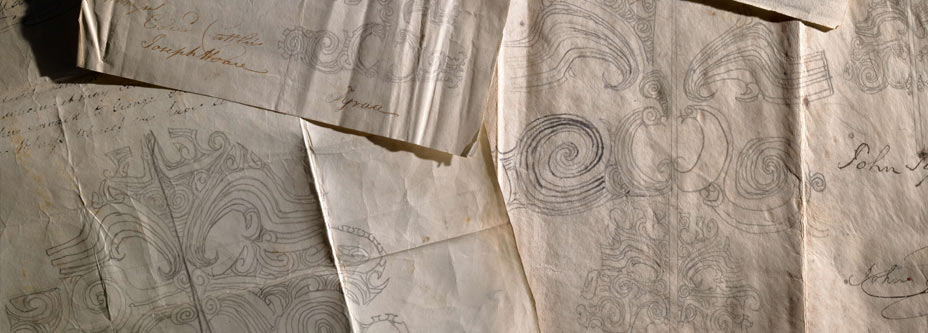
Hocken legacy
Sign of the times
Compared to a European signature, the tā moko as signature has a dramatic personality. Traditionally a mark of whakapapa and mana (identity and authority) etched on the body, the tā moko became used as a signature etched on paper, marking the person's authority within a new era of developing relationships between Māori and Pākehā in the early contact period of New Zealand's history.
The practice of rangatira using their tā moko as signature on documents became more commonly used in the 1830s when land transactions began to accelerate, but was first noted by the Anglican missionary, Samuel Marsden, in 1815.
The Hocken Collections has recently acquired further documents signed with tā moko signatures to add to the archival collection. The documents record agreements between Kāi Tahu and Pākehā relating to ownership and use of land and resources.
In some cases these tā moko signatures are the only known images of the rangatira depicted, making them especially valuable to descendants. The Hocken holds documents with tā moko signatures of Kāi Tahu rangatira Taiaroa, Tuhawaiki, Karetai and Topi Patuki (Patuki did not have tā moko, but is represented by drawings of his face), as well as the tā moko signatures of Ngāpuhi rangatira Hongi Hika and Rewa. There is also a tā moko signature of “John Parker or Omee”, who we have not yet been able to positively identify.
Some of the interesting features of the recently-acquired documents include a record of what Māori wanted and found useful from the deal – such as money, boats, axe heads and European clothing – but the compensation is trivial in comparison to the potential value of the land and resources. The documents also record examples of phonetic spelling of Māori names and place names, perhaps giving evidence of the pronunciation of the Kāi Tahu dialect.
None of the deeds are bi-lingual (in both Māori and English) like later land sale documents. It is, therefore, interesting to speculate how each side regarded the agreements. Were they a convenient short-term exchange of goods for the use of a piece of land or regarded as a more permanent arrangement?
Some of these documents were written and signed in Sydney, when Kāi Tahu rangatira were visiting, but shorter ones may have been written and signed in New Zealand. Sydney solicitor John Stephenson Clarke is associated with many of the examples held at the Hocken Collections and we believe the recent acquisition originated from his firm's records.
Although these land agreements were invalidated by NSW Governor Gipps' declaration in January 1840, claims for compensation were heard by the land claims commissions which were first established in 1841. The hearings took many years and are documented in a series of publications. The fact that original documents are still coming to light suggests that there were very many of them signed, possibly many more than there were ever post-treaty claims made.
- Anna Blackman, Curator of Archives and Manuscripts
- Jeanette Wikaira-Murray, Maori Resources Portfolio Librarian
We acknowledge the generosity of the descendants of Tuhawaiki in allowing us to publish this image.
Hocken Exhibitions
The Liquid Dossier: 2012 Frances Hodgkins Fellow Nick Austin
15 February – 13 April
Undressing the Pacific: Shigeyuki Kihara
20 April – 8 June
A Micronaut in the Wide World: The Imaginative Life and Times of Graham Percy
15 June – 11 August
